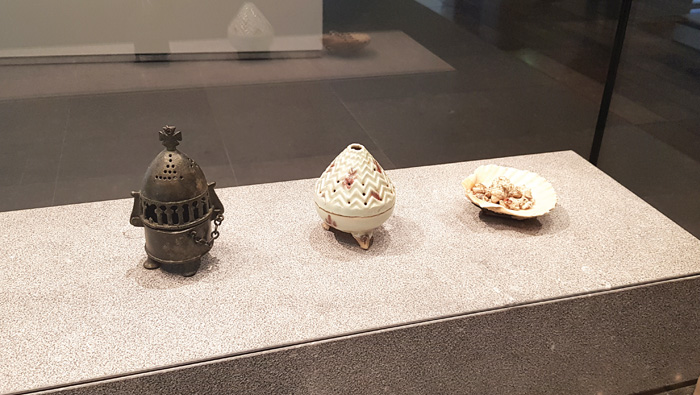
Abu Dhabi: Ancient Omani treasures that date back to 750AD are being housed among the rest of the priceless artefacts at the Louvre Abu Dhabi, where visitors from all over the world can catch a glimpse of the Sultanate’s rich past.
A jar of silver coins, which was hidden since the early Islamic period and dates back to the days of Abbasid Caliphate, offers plenty of insight into the role Oman played as a trade hub during the economic and social evolution of the Arabian Gulf between the 8th and 13th centuries.
In addition, a frankincense burner, which is shaped in the form of a mountain to reflect the Sultanate’s varied landscape and dates between 1100AD and 1300AD, is also on display at the Louvre Abu Dhabi. It was originally discovered in Al Baleed, which was part of the famed Land of Frankincense, from where Oman – home to some of the world’s best frankincense – shipped it to many parts of the world, including China, Egypt and even ancient Rome. The treasures were given to the Louvre Abu Dhabi by the National Museum of Oman.
Omani citizens who visited the Louvre Abu Dhabi on the National Day also received a discount on their ID cards at the entrance, and Emma Cantwell, the acting director of marketing and communications at the museum, said such artefacts show the significant steps taken for the formation of Arabia as we know it today.
“At the moment, we have a fantastic exhibition called Roads of Arabia, archaeological treasures from Saudi Arabia, showing amazing artefacts and the crossroads between Saudi Arabia and other GCC countries. This is really interesting for people from this part of the world,” she said.
“There is already an appetite for people from the GCC to appreciate the scale of this museum,” added Cantwell. “The architecture is fabulous and is inspired by traditional Arabic architecture. Of course, a key part of the museum is that we tell stories about this part of the world and what was happening here, both centuries ago and what is happening here now.”
The Louvre Abu Dhabi was opened a year ago, and is run by the Abu Dhabi Department of Culture and Tourism (DCT). It is located on Saadiyat Island, which has been earmarked as the cultural hub for the city, with the Government of Abu Dhabi signing a deal with the French Government that sees them keep the Louvre name for 30 years, which can then be renewed.
A number of other centres are expected to open up on the island, including the Guggenheim Museum Abu Dhabi, which is to be designed by award-winning architect Frank Gehry, a museum dedicated to Sheikh Zayed, the founding father of the United Arab Emirates, as well as a performing arts centre named after famed British architect Zaha Hadid.
“We show artwork from all civilisations from the beginning of time to the present day,” Cantwell said. “We have sculptures, paintings, archaeology, decorative arts, so you will see that, and the curators have put these together to show ideas or styles of art travelling over time, things that are borrowed. As people move, ideas move, and being here in Abu Dhabi, a place that has always been a centre of exchange, across the ancient travel routes, you see these ideas as you move across the galleries.”